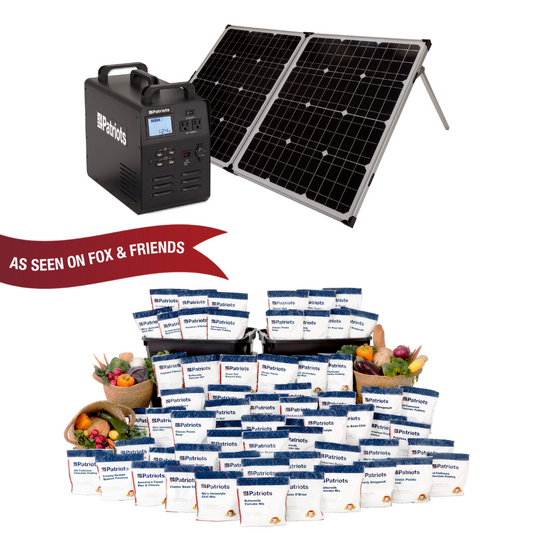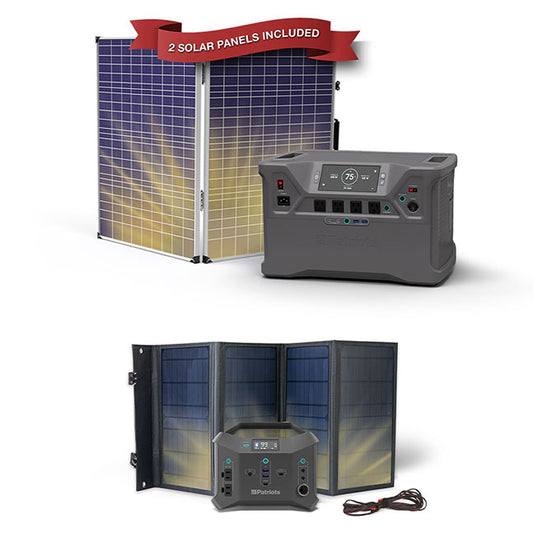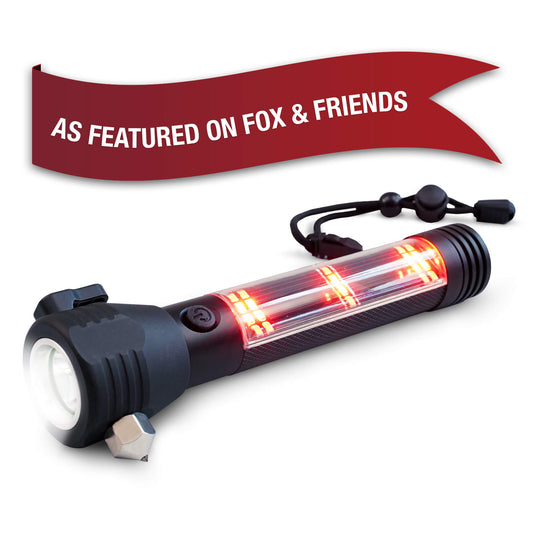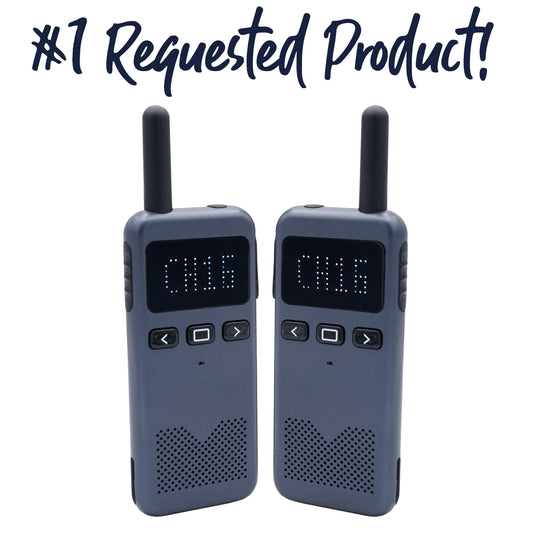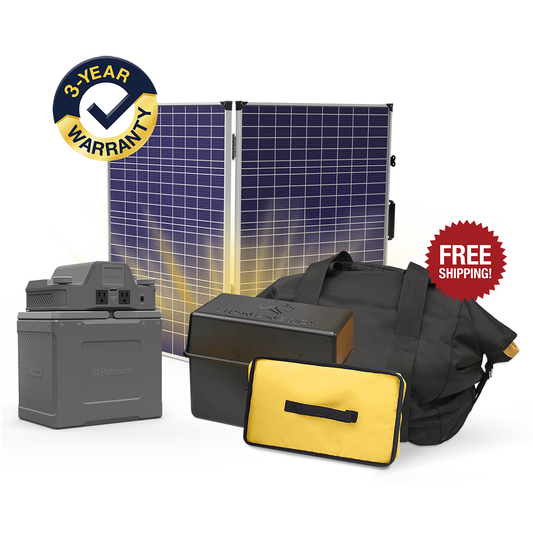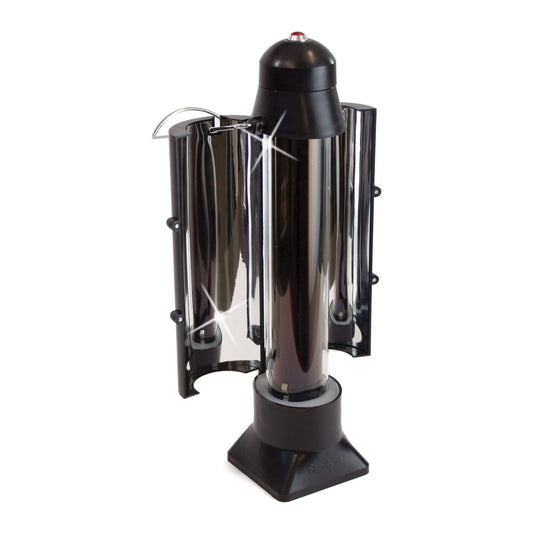
How to Prepare for Lengthy Power Outages

National Preparedness Month ended recently. But if you ask me, 2020 should have been designated as National Preparedness Year.
None of us has ever seen anything like what this year has brought us. Even if you set aside COVID-19, which has changed everyone’s life, 2020 has been a year like no other.
Massively destructive hurricanes and tornadoes – plus the deadly Midwest Derecho – have shaken us to our core.
Throw in the worst wildfires in the nation’s history and you have every reason you need to focus on preparedness. And now winter with its frigid temperatures and blizzards is right around the corner.
We all know what the common denominator is with these storms and wildfires. Power outages. Most of us have experienced brief blackouts. Probably few of us have dealt with lengthy ones.
But the nation’s three main electrical grids are aging and becoming more vulnerable. And the pandemic has slowed emergency response times. It’s crucial to be ready for lengthy planned and unplanned outages.
Today I want to talk about how to prepare for blackouts that could extend not just for hours, but for days or weeks.
Putting yourself in a position where you’re ready for that will give you peace of mind like you’ve never felt before.
If you live in the West, you may have experienced a planned power outage. Pacific Gas & Electric has conducted a number of them the past few years.
During wildfire season, especially when the heat and winds are high, there is an increased risk of fires starting due to their equipment.
So, they provide advance notice that power will be cut for a certain period of time to reduce those risks.
Generally speaking, this strategy works. But it is a major inconvenience for people who lose power. Their food spoils and they swelter in the heat. Some are unable to power medical equipment they need.
More often, outages are unplanned. They are the result of extreme weather or accidents. Or even small animals getting tangled in wiring or stuck in power stations.
Most of these outages are relatively brief. But at any time a storm can race in and leave people without power for days or weeks.
That’s what happened recently with Hurricane Laura. And what occurred in 2012 with Hurricane Sandy. And what we saw in 2005 with Hurricane Katrina.
We can’t control the weather. We can’t stop wildfires. All we can do is be prepared.
Here is a list of items you should stockpile to be ready for a lengthy power outage. Hopefully you can ride out this crisis at home. But be prepared to bug out if necessary.
- Back-up power. A portable, solar-powered generator will help you keep some lights on and power some appliances. Power banks are perfect for smaller electronic devices.
- Nutritious non-perishable food with a long shelf life. Make sure to include plenty of variety, which is especially important in a longer blackout.
- At least 1½ gallons of water per person per day. And a water purification system.
- A hand-crank emergency weather radio.
- Flashlights kept in various places in your home and extra batteries.
- First-aid kit and instructions.
- Personal hygiene items.
- Special needs items for children, seniors and those with disabilities.
- Pet supplies, including food, litter, etc.
- Manual can opener and cooking supplies.
- Warm clothes and rain gear for each family member. Blankets, pillows and sleeping bags.
- Heavy work gloves and boots.
- Plastic sheeting, duct tape and a utility knife.
- Tools, including a crowbar.
- Heavy-duty plastic bags and a plastic bucket for waste and sanitation.
- Whistle.
- Dust masks.
- Cash in small denominations. Banks could be closed and ATMs might not be working in a blackout.
- Photos of family members and pets for re-identification.
- Contact lists with phone numbers.
- Topographic maps of the area.
- Books, games, playing cards and other items to keep you entertained during a blackout.
In addition to stockpiling those items, here are a few tips for dealing with a lengthy blackout.
Using flashlights rather than candles will help reduce the risk of fire.
Keep your car’s gas tank as full as possible at all times. Gas stations are likely to be closed during a lengthy outage.
Unplug sensitive electronic equipment such as computers, televisions, stereos and printers. When the power comes back on, power spikes could damage delicate electronics.
Make sure your garage door can be opened manually during a blackout.
Only open your refrigerator and freezer doors when necessary. Food will stay good for several hours after a blackout. But not if you keep letting warm air in.
Fill up your bathtub with water immediately after a blackout. Fill pitchers as well and place them in the refrigerator and freezer.
Our recommendation for the best back-up power is the Patriot Power Generator 1800. It can power your fridge, freezer and medical equipment in an outage.
It will also keep lights on, power your cellphones and other electronic devices, and run a space heater or fan.
The Patriot Power Generator 1800 is fume-free, silent and safe to use indoors. And at only 40 pounds with easy-carry handles, you can take it anywhere you go.
Best of all, it charges for free with the power of the sun. Thanks to the included 100-watt folding solar panel.
Featured Products
- Regular price
- $2,499.95
- Regular price
-
$3,199.95 - Sale price
- $2,499.95
- Unit price
- per
- Regular price
- $699.95
- Regular price
-
- Sale price
- $699.95
- Unit price
- per
- Regular price
- $2,999.95
- Regular price
-
- Sale price
- $2,999.95
- Unit price
- per
- Regular price
- From $29.95
- Regular price
-
- Sale price
- From $29.95
- Unit price
- per
- Regular price
- $3,499.95
- Regular price
-
- Sale price
- $3,499.95
- Unit price
- per
- Regular price
- From $29.95
- Regular price
-
- Sale price
- From $29.95
- Unit price
- per
- Regular price
- $2,499.95
- Regular price
-
- Sale price
- $2,499.95
- Unit price
- per
- Regular price
- $499.95
- Regular price
-
- Sale price
- $499.95
- Unit price
- per
- Regular price
- $999.95
- Regular price
-
- Sale price
- $999.95
- Unit price
- per
- Regular price
- From $29.95
- Regular price
-
- Sale price
- From $29.95
- Unit price
- per
- Regular price
- $2,999.95
- Regular price
-
- Sale price
- $2,999.95
- Unit price
- per
- Regular price
- From $2,796.95
- Regular price
-
$8,390.95 - Sale price
- From $2,796.95
- Unit price
- per
- Regular price
- $4,999.95
- Regular price
-
- Sale price
- $4,999.95
- Unit price
- per
- Regular price
- From $129.95
- Regular price
-
$259.95 - Sale price
- From $129.95
- Unit price
- per
- Regular price
- $847.95
- Regular price
-
$897.95 - Sale price
- $847.95
- Unit price
- per
- Regular price
- $1,999.95
- Regular price
-
- Sale price
- $1,999.95
- Unit price
- per
- Regular price
- $279.95
- Regular price
-
- Sale price
- $279.95
- Unit price
- per
- Regular price
- From $69.95
- Regular price
-
- Sale price
- From $69.95
- Unit price
- per
- Regular price
- $29.95
- Regular price
-
- Sale price
- $29.95
- Unit price
- per
- Regular price
- $849.95
- Regular price
-
- Sale price
- $849.95
- Unit price
- per
- Regular price
- $249.95
- Regular price
-
- Sale price
- $249.95
- Unit price
- per
- Regular price
- $199.95
- Regular price
-
- Sale price
- $199.95
- Unit price
- per
- Regular price
- $129.95
- Regular price
-
- Sale price
- $129.95
- Unit price
- per
- Regular price
- $114.95
- Regular price
-
- Sale price
- $114.95
- Unit price
- per
- Regular price
- $69.90
- Regular price
-
- Sale price
- $69.90
- Unit price
- per
- Regular price
- $19.95
- Regular price
-
- Sale price
- $19.95
- Unit price
- per
